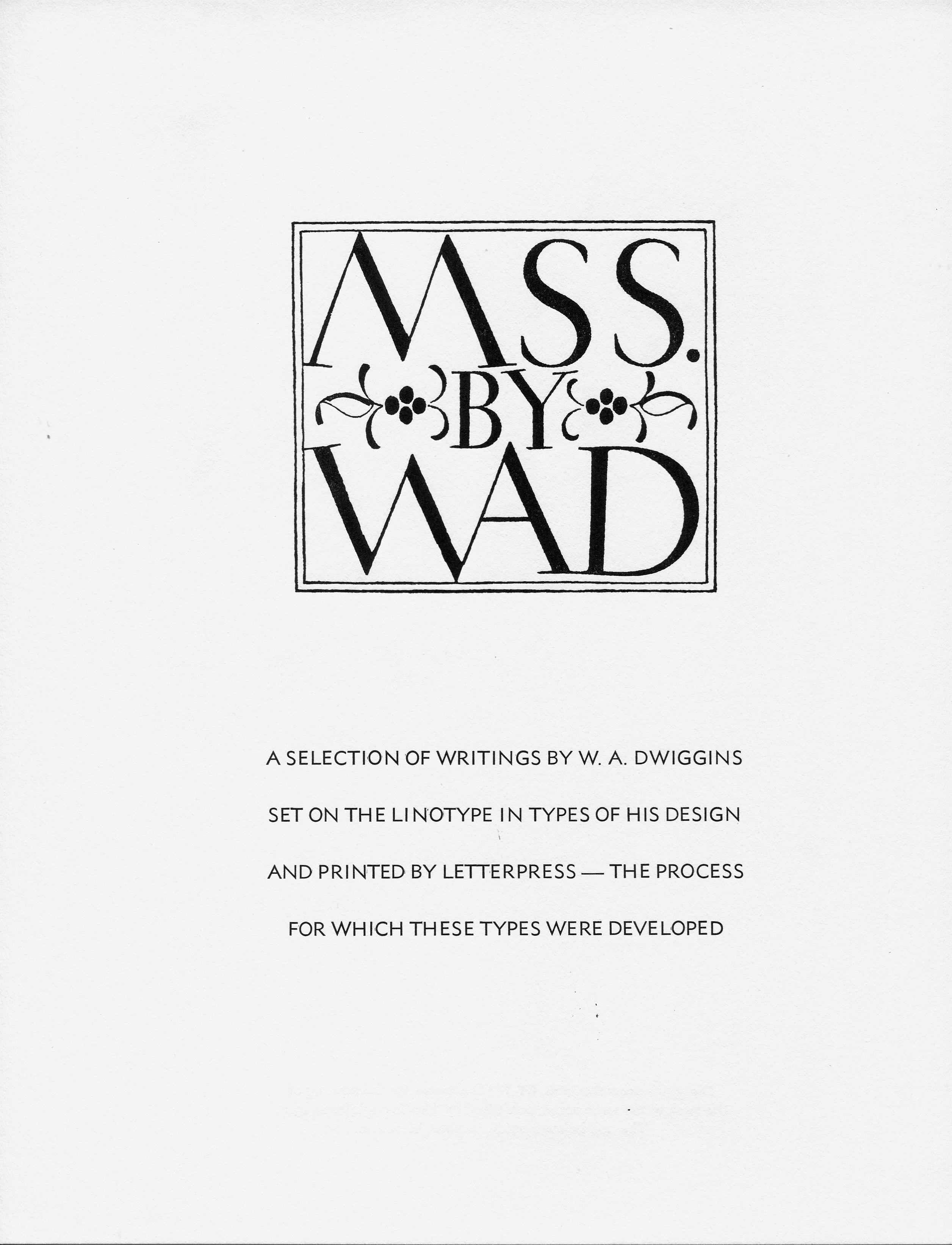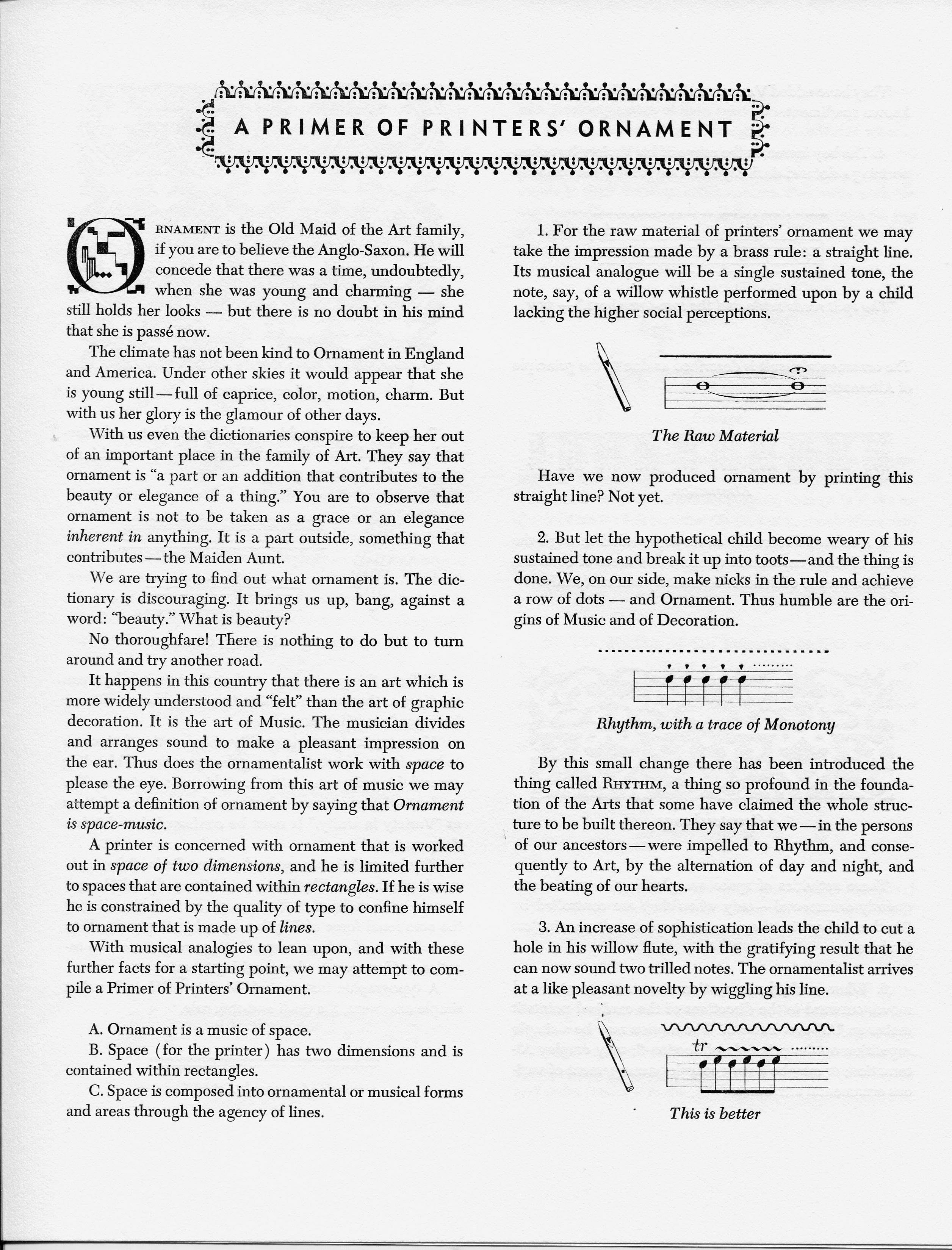
Bruce Kennett, W. A. Dwiggins: A Life in Design. Letterform Archive, San Francisco, 496pp., US$95, ISBN 978-0-9983180-0-4 (standard edition), US$350, ISBN 978-0-9983180-1-1 (deluxe edition). brucekennett.com/wa-dwiggins-a-life-in-design/
In 1923, when forty-three years old, William A. Dwiggins (or WAD to his many friends) was diagnosed with severe diabetes. His father died young due to diabetes, so Dwiggins understood he had just several years to live. He decided to wrap up his lucrative business as an advertising designer and printer, and to spend the rest of his life doing the work of love: book design and illustration.
Dwiggins was wrong: two years earlier insulin had been discovered, and his physician had access to this experimental drug. He lived for another thirty-three years, leaving a huge number of splendid books and illustrations, several fonts, as well as many essays, pamphlets, articles, plays and tales. He was incredibly prolific: at the peak of his creativity he designed 24 books per year. Furthermore, he made time for his many hobbies, including marionettes: WAD made important contributions to this ancient art, and his book about marionette making is still respected among practitioners. By the way, his expectation of “starvation” (as he wrote in a letter) was also wrong: Dwiggins quickly became widely recognized in the book world. Mergenthaler (the Linotype company) and Alfred Knopf had him on a retainer, and many publishers were happy to pay WAD for his work.
This book by Bruce Kennett is a fitting tribute to this master of American book design and typography. Kennett spent a decade and a half teaching about WAD, lecturing and writing. A talented designer himself, Kennett created a masterpiece of the book arts. His volume is typeset in LfA Aluminia, a digital revival of Dwiggins’ Electra font by Jim Parkinson (Letterform Archive sells the set for $75). It has about 1,200 color illustrations with many reproductions of WAD’s works, and a collection of his writings typeset in his fonts (the deluxe edition is accompanied by these samples printed on a letterpress; several are reproduced here).



The colophon reflects the love and the work that went into the book creation. I cannot help but reproduce it in full:
W. A. Dwiggins: A Life in Design has been produced in standard and deluxe editions, a total of 2,200 copies. Bruce Kennett designed the book and composed the text with LfA Aluminia, a revival of WAD’s Electra types that Jim Parkinson created expressly for this project. Photographs made at Letterform Archive were captured on a Phase One digital-camera system with raking light; the remaining photographs were made with Nikon digital SLR cameras, also with raking light. The paper for the body of the book is Sappi Opus Matte Text; the endpapers are Strathmore Writing Text, Ultimate White. The standard edition’s cover is printed on Sterling Ultra Text. The boards of the deluxe edition are covered with Neenah Environment Raw Text, Concrete, printed with a reproduction of Dwiggins’s design for Lakeside Press edition of Edgar Allan Poe’s Tales; its spine is made from Saderra leather and Taylor Box, of Warren, Rhode Island, built its slipcases. Penmor Lithographers, of Lewiston, Maine, provided all the presswork, using high-definition stochastic screens, and Acme Bookbinding/HF Group, of Charlestown, Massachusetts, performed the smyth-sewing and binding. Production details for the letterpress portfolio that accompanies the deluxe edition are described on page 453.
Eleven chapters of the book correspond to eleven addresses where Dwiggins studio was located. This periodization of WAD’s life is apt: each move corresponded to a change in the artist’s life, interests or the line of work. There are three separate unnumbered chapters about Dwiggins’ type design, marionettes and writings. It does not often happen that a lavishly illustrated book is also informative and well written. This book is an exception to this rule. The text is superb: Kennett does not try to overwhelm the reader with the arcana of typography, but he also does not oversimplify his writing. Instead Kennett’s style is direct, honest and full of love—the same as the style of Dwiggins himself. Moreover, the book satisfies the strict requirements of an academic monograph: it has sources and notes (14 pages of small print), several pages of bibliography and suggested reading, and a useful index—a rarity nowadays.

The book is a great work of love and art. I consider it one of the best books of the year—or many years.